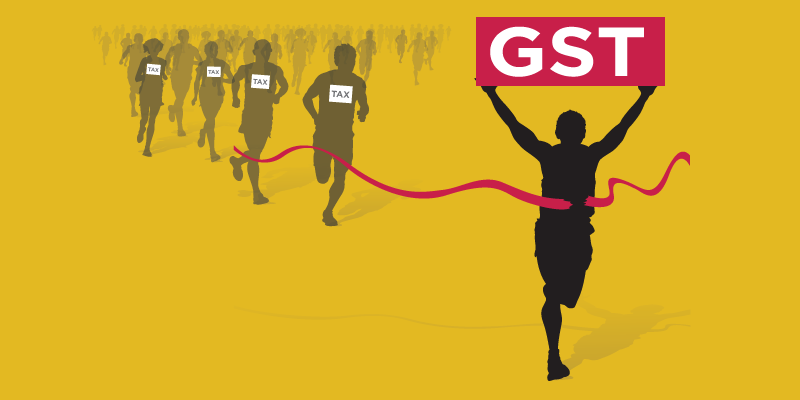The Government of India is all set to roll out the papers and begin the implementation of GST (Goods and Services Tax) from July 1st 2017. A major tax reform in India, most economists (and citizens) are very optimistic about the outcome of this new step.

A single taxation system to be followed by the entire country, indirectly reducing the liability on consumers who had to pay heavy indirect taxes for goods seems like a plan that should work in leaps and bounds.
Highlighting the main aspects of GST
It is now high time we all get acquainted with the new formals of GST. Here are 10 facts you need to know about GST to get a head start.
1. 60 countries all over the world have already implemented GST.
India will not be the first country in the world to implement GST into its rules and norms. While France was the first country to take a step and implement GST, other countries soon followed. As India is a federal country, it will fall under two GST categories- State GST and Central GST. The only other country in the world with dual GST is Canada.
2. The Rate for GST
The rate for GST varies from country to country, where in some countries it is as low as 1.5% (Aruba) and some countries it is as high as 27% (Hungary). In India however, the GST council of India has proposed a four tier GST structure with two standard rates.
A lower rate of 5% will be levied on essential goods such as personal care items, 28% on luxury goods and sin goods, and a standard rate of 12% and 18% on other goods.
3. Access on sin goods by the Government
The Government may levy access on sin goods higher than the expected 28%. This is an attempt by the Government to dissuade people to buy these goods which are potentially harmful, even fatal, after continuous consumption.
4. GST is transparent
Since GST is a transparent taxation system, businesses have to show the tax applied on their sales invoice. A customer will know exactly how much tax they are paying and what they are paying for.
5. Diversification of tax
GST will help diversify income sources for the Government from basic sources such as income tax and petroleum tax.

6. Compensation to certain states
The Government may choose to provide compensation to certain state (by law). Those states who suffer revenue losses due to implementation of GST (after being recommended by the GST council) will be provided with compensations, but only for a five year period. Since GST is a consumption based tax, those states with higher consumption would collect higher revenue.
7. IGST or Integrated GST
This refers to the levy or collection of GST on supplies for interstate commerce or trading purposes. This tax collected would be divided among the State and the Centre in a predetermined way, provided by the recommendation of the GST council.
8. Bad news for alcohol and tobacco users
Goods meant for alcoholic consumption and tobacco and tobacco related products will also face a hike, due to the new GST reform; higher tax, meaning more money to be spent on the products. Hopefully, this will convince individuals to slowly reduce or stop the consumption of these harmful products.
9. Free supplies are taxable under GST
Supplies between principal and agent are taxable under GST, even without consideration. If the principal sends good to his agent for further sale, this will be taxable under GST.
10. Immovable property is also Taxable
As GST is a tax on goods and services, services can be defined as anything that is not a good. Immovable properly also falls under this definition, making it taxable under GST.
A well-defined tax structure is a must to benefit the economy of a country. GST is a huge step towards developing a better country for its citizens.
Read More articles –



That’s such a detailed and informative post on GST. I’m gonna share it with my friends and family who are still in doubt about GST.